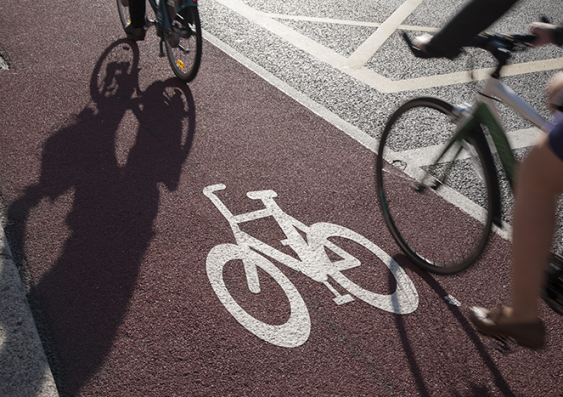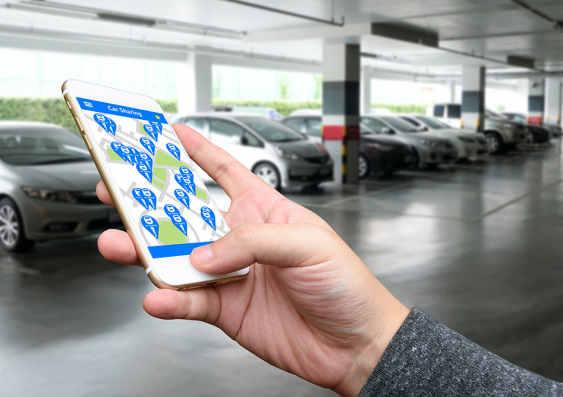We need safe transport alternatives after COVID-19, UNSW experts say
Before jumping behind the wheel, we should consider other modes of transport, say UNSW experts.
Before jumping behind the wheel, we should consider other modes of transport, say UNSW experts.

More restrictions are being lifted, kids have returned to the classroom and employers start to think about welcoming staff back to the office. But with continuing social distancing measures on public transport, how do we get around safely?
Two UNSW transport experts say that analysing data about people’s transport behaviour and providing safe alternatives to driving is crucial to getting people back to office spaces.
Associate Professor Taha Rashidi from UNSW Engineering is an expert in the connection between travel behaviour and time use and says we can definitely expect to see a switch between existing modes of transport to emerging mobility options.
“What we don’t want to happen is more cars on our roads because that will cause absolute gridlock,” he says.
“People will further consider mobility services such as car sharing, ride sharing, and carpooling if the price is competitive, compared to other options such as public transport.
“I think we will start to see an emergence of start-ups who will develop technologies, such as mobile apps, that can plan out your commute and book everything in for you simultaneously.
“These technologies will provide a seamless door-to-door mobility option where multimodal alternatives are offered with flexible digital payment options.
“In addition to trip planning, these technologies will change the daily activities and travel diaries of individuals to help them save money and increase the efficiency of the system as a whole.”

If the price is competitive, Associate Professor Taha Rashidi predicts we will see more people use mobility options such as car sharing. Image: Shutterstock
A/Prof Rashidi also says that, even in light of COVID-19, people will still factor in total duration and cost when making decisions about their commute.
“We know that if you live more than 10 to 15 kilometres from work, driving can be quite overwhelming in peak hour traffic, especially when you have to pay for parking and tolls.
“But at the same time there are discussions by policymakers about schemes to subsidise parking facilities in CBD to use the existing infrastructure.
“Therefore, options such as public transport, mobility services and non-motorised modes of transport will still compete with driving alone, if properly priced and incentivised.”
A/Prof Rashidi says we also need to consider flexible working locations, something like an Airbnb for workspaces. So instead of travelling to work, you could go into an office or workspace closer to home. While he admits this requires a lot of coordination and negotiation, he believes initiatives like this will start to become more popular in the future as more people focus on maintaining a flexible work life balance.
As a member of the Research Centre for Integrated Transport Innovation, A/Prof Rashidi says we won’t know what solution is viable or likely to be adopted by the market unless we collect more data and study the demand.
“We cannot make conclusions and evaluate the effectiveness of all these possible futures unless we actually study a reasonable sample of people to find out their demand, do a cost benefit analysis and then come up with a robust assessment about the benefits and potential consequences.”
While various motorised alternatives are considered by commuters, there is also an emerging demand for active modes of transport such as biking and walking.
As an expert in active transport, Associate Professor Julie Hatfield from UNSW Science says the Government should make it as safe, easy and as obvious as possible to encourage more people to implement walking and cycling into their commute. Research suggests that the main deterrent for more people getting on their bicycles is safety.
“Setting up corridors for active transport at this time is absolutely critical as people are making their decision about how they want to get to work,” says A/Prof Hatfield.
“When infrastructure plans are made, cars are typically in mind first. When the timing of lights is set, cars are thought of first.
“So of course, many people don’t feel comfortable getting on a bicycle because they are worried they will get injured.
“We need to design for active transport if we’re going to achieve a swing away from motorised transport.”
However, not everyone lives within a walkable or cyclable distance from where they need to go. A/Prof Hatfield says mixed modal transport is really important as well – for example, people catching public transport for part of their journey and walking or cycling the rest.
A/Prof Hatfield says that although we may see more traffic and congestion, it may not turn out to be as high an increase as predicted based on pre-COVID-19 data.
“There will be fewer people going to work because some of have lost jobs and others have discovered they can work from home more often. We need to collect data around what people’s intentions are to properly plan effective transport infrastructure.
“Any increase in use of private motor vehicles is a shift in the wrong direction; it’s bad for the environment and our quality of life and we should really be shifting to active transport.”